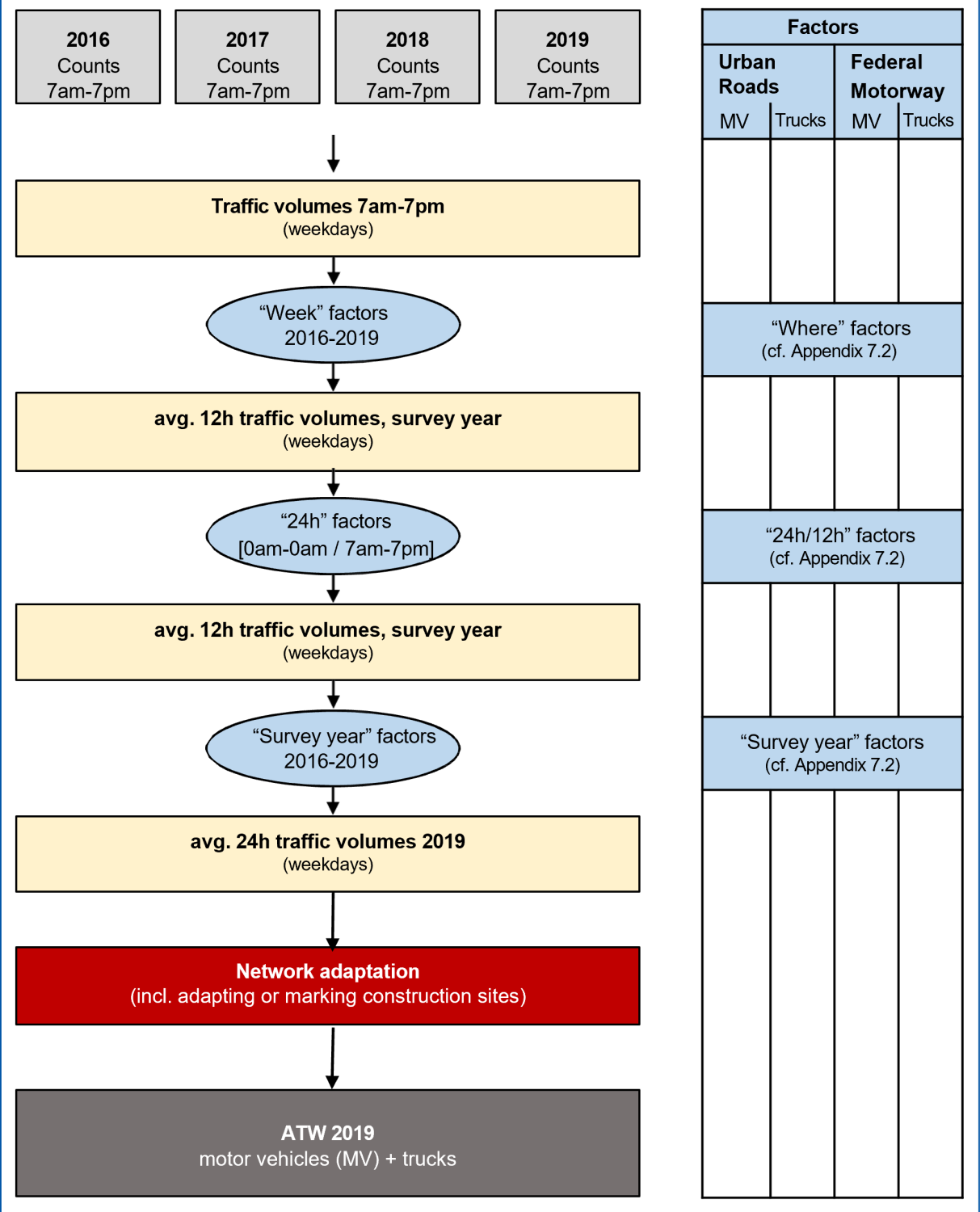Processing for purposes of air quality and noise action planning as “average daily traffic volume (ADT) 2019”
For the purposes of air quality and noise action planning, the data set presented here was further processed.
For the primary road network, the following traffic volumes are shown proportionally, alongside additional geometric data (permissible maximum speeds, road surface type and condition, identification of bus lanes, etc.):
- motor vehicles,
- cars,
- trucks < 3.5 t (light commercial vehicles),
- trucks > 3.5 t,
- buses,
- coaches,
- motorcycles.
The original counting network was extended following additional reviews and adjustments, which also included further dividing points for a more precise road sectioning. Overall, this network now comprises about 1,778 km of route length of the primary road network (cf. Tab. 6).
This network has a more detailed sectioning and contains additional road sections as well as a distinction between traffic lanes. Therefore, in cases where values could not be transferred from the existing network of the “Traffic Volume Map 2019”, they were collected retrospectively, determined using plausibility checks or supplemented by model data. The section-related information on the respective source of the ADT values for motor vehicles is provided in the “Source of motor vehicle values” field in the data display for the map (cf. map in the Geoportal).
Another essential task in the processing was the conversion of the counts of the average weekday traffic volumes (AWT) to the ADT values presented here.
Since buses, coaches and motorcycles were not captured in the traffic counts, a separate analysis was carried out in this respect, based on the intersection and cross-section counts of the Traffic Management Division. The traffic volumes and shares for cars and light commercial vehicles were also calculated from the existing motor vehicle and truck values of the Traffic Volume Map 2019.

